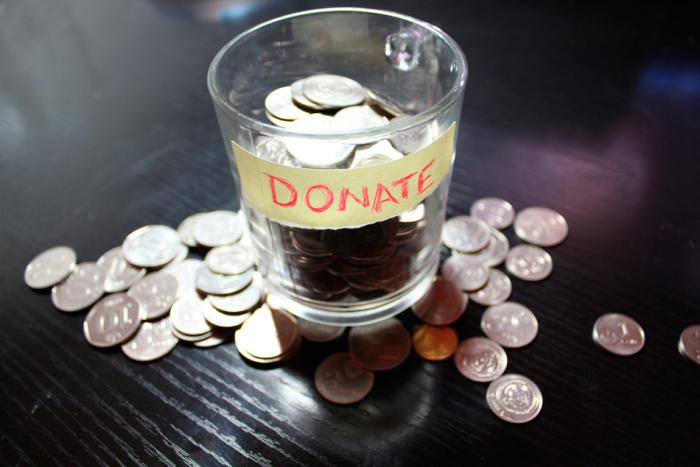“A fashion journalist needs to have the knowledge to differentiate between the good, the average and the bad... But, sadly, you don't even need the fingers of one hand to count the number across the globe who do,” wrote Colin McDowell, a stalwart British fashion journalist, in 2010.
Among these single digits is Robin Givhan, who won a Pulitzer Prize in 2006 for her work; Suzy Menkes, who put in over 25 years as Style Editor of the International Herald Tribune; and Cathy Horyn, the feared and revered former fashion critic at the New York Times (and proponent of bacon fat cookies). Horyn’s name was synonymous with commentary that cut like an incisor. Her fashion show recaps were a must-read, but their brutal honesty got her banned from numerous shows and dissed in a leaden rap by Lady Gaga; even Oscar de la Renta took a full-page ad out in Women's Wear Daily to protest her alleged meanness. Her sudden departure from the Times was met with shock, followed by bafflement as to whether any working writer had the chops to replace her.
Enter Simon Doonan, the 62-year-old Creative Ambassador for Barney’s New York. Doonan was raised a “working class slag” in homophobic small-town Britain, and escaped the postwar dreariness through fashion. He landed in New York City in the 1970s, where he worked as a window dresser—he proudly recounts being the only dresser to have ever used colostomy bags in a window display—along with stints as a set designer for Beverly Hills Cop and in display at the Costume Institute at the Metropolitan Museum of Art. While not a fashion journalist, Doonan has become the John Waters of the fashion industry: arch, outspoken, and wise, a sort of omniscient being in the midst of a crazy world everyone else thinks is completely normal.
Doonan’s jarringly honest writing exposes the cracked hilarity of the industry. His newest book, The Asylum, is a collection of anecdotes that read like an episode of TLC’s My Strange Addiction, complete with vivid descriptions of fashion stylists and magazine editors drinking their own urine. As a storyteller, Doonan has a gift for highlighting the bizarre without being consumed by it. (One of his best stories includes the revelation that iconic street-style photographer Bill Cunningham is an amateur taxidermist: “Oh, young fella, it’s not a peacock. I was cycling through Central Park and I found a dead seagull… So I took it home and stuffed it and added goose feathers and peacock feathers! Voilà!”)
But Doonan is also an éminence grise, the consummate insider whose perceptions have just as much weight as any cultural critic’s. In one chapter, Doonan remembers being approached by a young CNN journalist looking for advice on a brainy way to cover fashion week. “In no time at all, we realized that this was an absurd notion and abandoned it,” he writes. Dismayed by his pronouncements, I decided to ask him myself whether there is room for more substance in the field. “Well that’s not going to be a long conversation,” he chortled.
A recent Business of Fashion op-ed attributed the lack of “honest” criticism to a narrowing gap between content and commerce in magazines. Yet this is only one piece of the puzzle. Fashion has always occupied a unique space at the intersection of art, commerce, and craft; even in 1996, industry professionals accused glossy fashion magazines of being little more than glorified catalogues.
The digital revolution has diffused fashion coverage more widely than ever before: collections are beamed across the Internet nearly as soon as they’re shown. As a result, the fashion industry is no longer the exclusive playground of wealthy women, but rather a global spectator sport. The extra attention has prompted designers to add extra “pre-fall” and “resort” collections to their traditional offerings, to capitalize on a swelling market. As beautiful garments abound, journalistic acumen is being stretched thinner than a cell membrane.
The digital revolution has diffused fashion coverage more widely than ever before: collections are beamed across the Internet nearly as soon as they’re shown. As a result, the fashion industry is no longer the exclusive playground of wealthy women, but rather a global spectator sport.
The fashions themselves are also less meaningful than ever. Whereas fashion was once a throbbing artery that reflected meaningful developments in our culture—think punk as a response to Britain’s economic turmoil in the 1970s—it has fanned out into countless capillaries. Every niche is represented: “Brooklyn Hipster, New Jersey Douchebag,” Doonan rattles off. “Journalists who started out their careers dissecting the cultural resonance of fashion season-by-season ended up hitting a bit of a brick wall in the last few years, because fashion ceased to have intrinsic meaning.” While “designer clothes have never looked better,” they just don’t carry the broader cultural significance necessary for an eloquent think piece. And the immediacy of social media means that people are more inclined to rely on their own tastes.
But evaluating a collection requires more than taste: Doonan notes that Cathy Horyn was particularly dogged in her pursuit of how fashion resonated in cultural context. Her background as a reporter, in the court system and on education, helped her develop the knowledge base, and the tenacity, to find meaning in fashion. Horyn herself says, “It’s all about hitting a nerve. You can grab people with so little words. When you put real emotion into a piece you will get real responses.”
Doonan believes that good fashion journalism is about knowing the references. When he first saw Pharrell’s Arby’s-eque hat at the Grammy awards, he thought: “I wonder if it’s a vintage Buffalo Girls Vivienne Westwood hat or if someone did a copy?” Fashion continuously recycles its biggest moments—styles beget one another more rapidly than Biblical figures—so evaluating a collection means drawing from a reservoir of historical knowledge. Doonan singles out Tim Blanks of Style.com as one of the best working fashion journalists today because “he dissects…and does a great job of tirelessly referencing previous collections.” I’d add Lynn Yaeger, who recently recapped the Fall/Winter collections for NewYorker.com, and Alexander Fury of The Guardian to that list.
In the end, Vanessa Friedman, former fashion editor at the Financial Times, was chosen to replace Cathy Horyn. Time will tell if her work measures up to the substance and sharpness of her predecessor. Even if fashion has “less intrinsic meaning” than it used to, that doesn’t mean fashion journalists get a pass on making meaningful commentary. Even Doonan admits, “The [fashion] landscape is so huge, vast, and fragmented, it’s an endless source of fascination. I’m never bored.”






